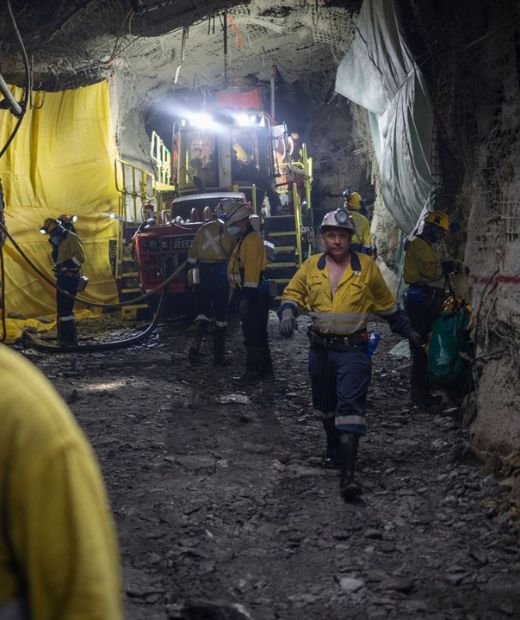Gold mines in South Africa
Gold Mining in South Africa
South Africa Gold Mining
Gold Mining in South Africa; South Africa is a home for some of the world’s largest gold mines covering about 4.2% of the world’s production of Gold or precious metals.
The Witwatersrand basin is one of the largest mineral deposits in the world and it contains the majority of SA’s gold resources.
The discovery of gold in the late 19th century led to a gold rush that sparked the development of Johannesburg, one of South Africa’s capitals, and was crucial in the development of the country’s economy and growth during the 20th century.
In 2019, the mining of gold contributed approximately $23.9 billion to Country’s GDP. Buy Gold Bars from South Africa Today!
Gold Mining in South Africa – Most of the country’s gold resources are located in the Witwatersrand Basin, one of the world’s largest gold placer deposits.
The underground geological formation surfacing in the Witwatersrand is a 56 kilometer-long north-facing escarpment running from east to west. It begins in Bedfordview in the Gauteng Province’s East Rand, through Johannesburg and Roodepoort, to Krugersdorp, both in Gauteng’s West rand.
Gold is also found in the Free State and the North West Provinces.
In South Africa, mining of gold is typically involving methods like panning, sluicing, dredging, hard rock mining and by-product mining. The most effective method used is hard rock mining because reserves are typically encased in deep underground rock.
There are 86 gold mines in South Africa and these include: 41 underground mines
: 10 surface mines
: 5 surface/underground
: 30 undefined mines.
History of Gold Mining in South Africa
The discovery of gold in Witwatersrand in 1886 marked a turning point in South Africa’s history, transforming it into one of the world’s leading gold producers. Prospectors, drawn by earlier gold findings in Barberton and Pilgrim’s Rest, flocked to the Witwatersrand basin, leading to a rapid gold rush. This discovery led to the establishment of Johannesburg, which quickly became the economic hub of the country.
Gold mining shaped South Africa’s economy by driving industrialization, urbanization, and infrastructure development. The mining sector attracted massive foreign investments, leading to the construction of railways and ports to support exports. Additionally, it created job opportunities, drawing thousands of workers, including many from neighboring countries. However, the industry also introduced exploitative labor policies, including the migrant labor system, which had long-term social and economic consequences.
Several key historical mining companies played a crucial role in South Africa’s gold industry. Cecil Rhodes’ De Beers Consolidated Mines and Barney Barnato’s Barnato Brothers were among the early pioneers. The formation of major companies such as Anglo American Corporation in 1917 and Gold Fields Limited in 1887 helped establish South Africa as a dominant force in global gold production. These companies controlled vast mining operations, contributing to the country’s wealth while also shaping its political landscape.
Despite its historical significance, gold mining in South Africa faces declining reserves, labor disputes, and environmental challenges today. However, the industry remains a crucial part of the economy, with ongoing efforts to adopt more sustainable mining practices.
Major Gold Mines and Mining Areas in South Africa
South Africa is home to some of the world’s largest and most productive gold mines, primarily concentrated in the Witwatersrand Basin, which has produced over 40% of all gold ever mined globally. Among the top-producing mines are:
- Mponeng Gold Mine – The deepest mine in the world, reaching depths of over 4 km, Mponeng, owned by Harmony Gold, is one of the richest and most productive gold mines in South Africa.
- South Deep Gold Mine – Located in Gauteng and owned by Gold Fields, South Deep is the largest gold mine in South Africa by reserves, with an estimated 32.8 million ounces of gold.
- Driefontein Gold Mine – Situated in the West Wits region, Driefontein has been a key contributor to South Africa’s gold production for decades.
- Kloof Gold Mine – Another major mine in the Witwatersrand region, Kloof is known for its high-grade gold deposits.
The Witwatersrand Basin remains the richest gold-bearing region, covering areas like Gauteng, North West, and Free State provinces. Additionally, Barberton in Mpumalanga has smaller but high-grade gold deposits, known for being one of the earliest gold mining sites.
Despite declining production, these mines continue to play a vital role in South Africa’s mining economy.

FAQs on Gold Mining in South Africa?
1. What is the current state of gold mining in South Africa?
Gold mining in South Africa has been declining over the years due to factors like rising operational costs, lower ore grades, and safety concerns. However, South Africa still holds a significant position in global gold production. It has some of the world’s deepest gold mines, although production has decreased in recent years, with a shift towards focusing on higher-grade, more economically viable deposits.
2. Why is South Africa’s gold production declining?
The decline in South Africa’s gold production is due to several factors:
Decreasing ore grades: The gold that remains is harder to extract and less concentrated.
Aging mines: Many of the country’s gold mines are deep, old, and costly to operate.
Safety concerns: Mining conditions, especially in deep mines, are hazardous, leading to accidents and fatalities.
High costs: South Africa faces high labor and energy costs, making it less competitive compared to other gold-producing countries.
3. What are the main gold mining regions in South Africa?
South Africa has several major gold mining regions, including:
The Witwatersrand Basin: Located near Johannesburg, it is one of the richest gold-producing areas in the world, historically responsible for the bulk of South Africa’s gold output.
The Free State: Known for the Harmony Gold Mine, this area also hosts significant gold reserves.
The Mpumalanga region: Houses the Barberton mines, one of the oldest gold mining areas in the country.
4. Which companies are the biggest gold producers in South Africa?
Some of the largest gold mining companies in South Africa include:
AngloGold Ashanti: One of the world’s largest gold mining companies, with several operations in South Africa.
Harmony Gold Mining Company: Another leading gold producer with operations in various South African regions.
Gold Fields: A major player in the global gold mining industry with mines in South Africa.
Sibanye Stillwater: A multinational precious metals mining company, which also operates gold mines in South Africa.
5. What is the future of gold mining in South Africa?
The future of gold mining in South Africa is uncertain but continues to hold potential. While challenges like deep and costly mining operations persist, there are efforts to revitalize the industry by exploring new technologies, such as automation and new exploration methods. Additionally, some companies are focusing on mining lower-cost, higher-grade deposits, and the development of new mining methods could make gold mining in South Africa more sustainable.
6. What is the impact of gold mining on South Africa’s economy?
Answer: Gold mining has historically played a vital role in South Africa’s economy, contributing significantly to employment, exports, and GDP. However, as production declines, the sector’s economic contribution has diminished. Despite this, gold mining still provides jobs for tens of thousands of South Africans, supports local communities, and contributes to the country’s export revenues.
7. Are there any environmental concerns related to gold mining in South Africa?
Yes, gold mining in South Africa has significant environmental impacts, including:
Water pollution: Mining activities, especially in older mines, can contaminate local water supplies with toxic chemicals like cyanide and mercury.
Acid mine drainage: The oxidation of sulfide minerals creates acid, which can leach heavy metals into the environment, impacting ecosystems.
Land degradation: Gold mining can lead to the destruction of large areas of land, particularly in the form of tailings dumps and open-pit mining.
Efforts are being made to mitigate these environmental risks, including stricter regulations and the development of more sustainable mining practices.
8. What are the key challenges faced by gold miners in South Africa?
The key challenges faced by gold miners in South Africa include:
Labor strikes: The mining industry frequently experiences labor unrest, which can disrupt operations.
High operational costs: The deep mines and energy-intensive operations drive up costs, affecting profitability.
Aging infrastructure: Many mines are old, requiring significant investment to maintain and upgrade equipment and facilities.
Health and safety: The gold mining industry has a high risk of occupational injuries and diseases such as silicosis and tuberculosis.
9. What is the role of the government in South Africa’s gold mining industry?
The South African government plays a key role in regulating and supporting the gold mining industry. It sets policies related to mining rights, taxation, and environmental protection. The government has been trying to attract investment into the sector through initiatives like the Mining Charter, which aims to promote transformation and beneficiation in the industry. However, challenges remain regarding the regulation of safety and environmental concerns.
10. How is gold mining affecting local communities in South Africa?
Gold mining has both positive and negative effects on local communities:
Positive: It provides employment, infrastructure development, and opportunities for local businesses.
Negative: Communities near mining operations may suffer from health issues related to dust, pollution, and toxic runoff. There can also be social displacement, with people being forced to move due to mining activities or the environmental impact.
Efforts are being made to improve the relationship between mining companies and local communities through social responsibility programs and initiatives aimed at improving community health and development.
11. What are “illegal” or “artisanal” gold miners in South Africa?
Illegal or artisanal miners, often referred to as “zama-zamas,” are individuals or small groups who engage in unlicensed gold mining, typically in abandoned or informal mining areas. These miners often face dangerous working conditions and may operate without proper safety measures or environmental controls. While they contribute to the economy by providing some informal employment, illegal mining also poses significant risks to both the miners and the environment.
12. How do gold mining companies in South Africa ensure the safety of their workers?
Safety in South Africa’s gold mines has improved over the years, but mining remains one of the most dangerous industries. Companies have introduced various safety measures, including:
Improved mining equipment: For better worker protection.
Regular safety drills: To prepare workers for emergency situations.
Health monitoring: To detect diseases like silicosis early.
Mine ventilation systems: To reduce exposure to harmful gases and dust.
Health and safety training: For all workers to minimize accidents.
13. How does the gold mining process work in South Africa?
Gold mining in South Africa typically follows these steps:
Exploration: Finding gold-rich deposits through geological surveys and sampling.
Mining: Extracting gold from the earth, often through deep underground mining or open-pit mining.
Processing: Crushing ore and using chemicals (like cyanide) to separate the gold from other materials.
Refining: Purifying the gold to achieve a higher level of purity, often 99.5% or more.
Exporting: Refined gold is exported for further processing or sold on international markets.
